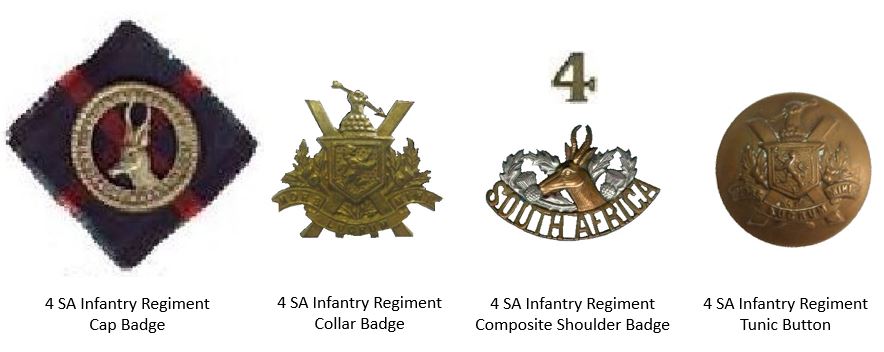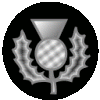
The 9th (Scottish) Division, was an infantry division of the British Army during World War I, one of the Kitchener's Army divisions raised from volunteers by Lord Kitchener to serve on the Western Front during the First World War.

The South African Army is the army of South Africa, first formed after the Union of South Africa was created in 1910. The South African military evolved within the tradition of frontier warfare fought by Boer Commando (militia) forces, reinforced by the Afrikaners' historical distrust of large standing armies. It then fought as part of the wider British effort in World War II, but afterwards was cut off from its long-standing Commonwealth ties with the ascension to power of the National Party in South Africa in 1948. The army was involved in a long and bitter counter-insurgency campaign in Namibia from 1966 to 1990. It also played a key role in controlling sectarian political violence inside South Africa during the late 1980s and early 1990s.

The Argyll and Sutherland Highlanders was a line infantry regiment of the British Army that existed from 1881 until amalgamation into the Royal Regiment of Scotland on 28 March 2006.

The Battle of Delville Wood(15 July – 3 September 1916) was a series of engagements in the 1916 Battle of the Somme in the First World War, between the armies of the German Empire and the British Empire. Delville Wood (Bois d'Elville), was a thick tangle of trees, chiefly beech and hornbeam, with dense hazel thickets, intersected by grassy rides, to the east of Longueval. As part of a general offensive starting on 14 July, which became known as the Battle of Bazentin Ridge (14–17 July), General Douglas Haig, Commander of the British Expeditionary Force, intended to capture the German second position between Delville Wood and Bazentin le Petit.

The Transvaal Scottish Regiment is an infantry regiment of the South African Army. As a reserve unit, it has a status roughly equivalent to that of a British Army Reserve or United States Army National Guard unit.

The Cape Town Highlanders Regiment is a mechanised infantry regiment of the South African Army. As a reserve unit, it has a status roughly equivalent to that of a British Army Reserve or United States Army National Guard unit.

The Witwatersrand Rifles Regiment is a mechanised infantry regiment of the South African Army. As a reserve unit, it has a status roughly equivalent to that of a British Army Reserve or United States Army National Guard unit.
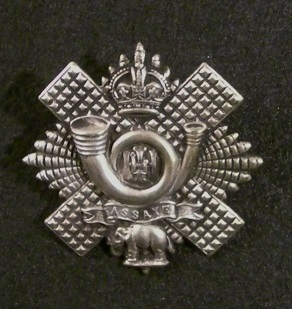
The Highland Light Infantry (HLI) was a light infantry regiment of the British Army formed in 1881. It took part in the First and Second World Wars, until it was amalgamated with the Royal Scots Fusiliers in 1959 to form the Royal Highland Fusiliers which later merged with the Royal Scots Borderers, the Black Watch, the Highlanders and the Argyll and Sutherland Highlanders to form the Royal Regiment of Scotland, becoming the 2nd Battalion of the new regiment.

The Gordon Highlanders was a line infantry regiment of the British Army that existed for 113 years, from 1881 until 1994, when it was amalgamated with the Queen's Own Highlanders to form the Highlanders. Although the 'gordon highlanders' had existed as the 92nd Regiment of Foot since 1794, the actual 'Gordon Highlanders Regiment' was formed in 1881 by amalgmation of the 75th (Stirlingshire) Regiment of Foot and 92nd Regiment of Foot.

The South African Irish Regiment is an infantry regiment of the South African Army. As a reserve unit, it has a status roughly equivalent to that of a British Army Reserve or United States Army National Guard unit.

The Cape Town Rifles (Chief Langalibalele Rifles is an infantry regiment of the South African Army. As a reserve unit, it has a status roughly equivalent to that of a British Army Reserve or United States Army National Guard unit.

The Seaforth Highlanders was a historic line infantry regiment of the British Army, mainly associated with large areas of the northern Highlands of Scotland. The regiment existed from 1881 to 1961, and saw service in World War I and World War II, along with many smaller conflicts. In 1961 the regiment was amalgamated with the Queen's Own Cameron Highlanders to form the Queen's Own Highlanders, which merged, in 1994, with the Gordon Highlanders to form the Highlanders. This, however, later joined the Royal Scots Borderers, the Black Watch, the Royal Highland Fusiliers and the Argyll and Sutherland Highlanders to create the present Royal Regiment of Scotland.
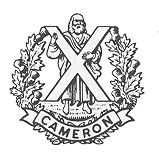
The Queen's Own Cameron Highlanders or 79th Regiment of Foot was a line infantry regiment of the British Army, raised in 1793. It amalgamated with the Seaforth Highlanders to form the Queen's Own Highlanders in 1961.

The Glasgow Highlanders was a former infantry regiment of the British Army, part of the Territorial Force, later renamed the Territorial Army. The regiment eventually became a Volunteer Battalion of the Highland Light Infantry in 1881. The regiment saw active service in both World War I and World War II. In 1959 the Highland Light Infantry was amalgamated with the Royal Scots Fusiliers to form the Royal Highland Fusiliers. The Glasgow Highlanders was later amalgamated into the 52nd Lowland Volunteers in 1967.
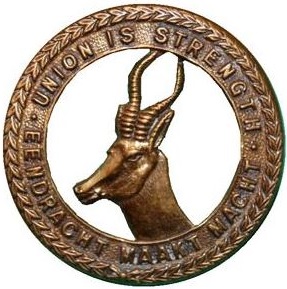
The South African Overseas Expeditionary Force (SAOEF) was a volunteer military organisation in World War I.
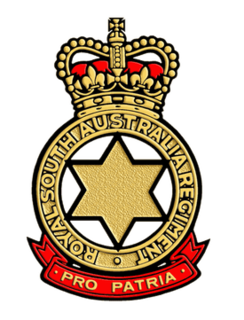
The Royal South Australia Regiment is a reserve regiment of the Australian Army consisting of a single battalion, the 10th/27th Battalion, part of the 9th Brigade. It was raised on 1 July 1960, as The South Australia Regiment.
The South African 1st Infantry Brigade was an infantry brigade of the army of the Union of South Africa during World Wars I and II. During World War I, the Brigade served as a British formation in Egypt and on the Western Front, most famously the Battle of Delville Wood. It was reactivated at the start of the Second World War as a South African formation and served in East Africa and the Western Desert; the Brigade disbanded on 1 January 1943.
This page details the South African Army order of battle in 1940, before and after the formation of expeditionary forces.

1st SA Infantry Regiment was an infantry regiment of the South African Army, during World War One.

